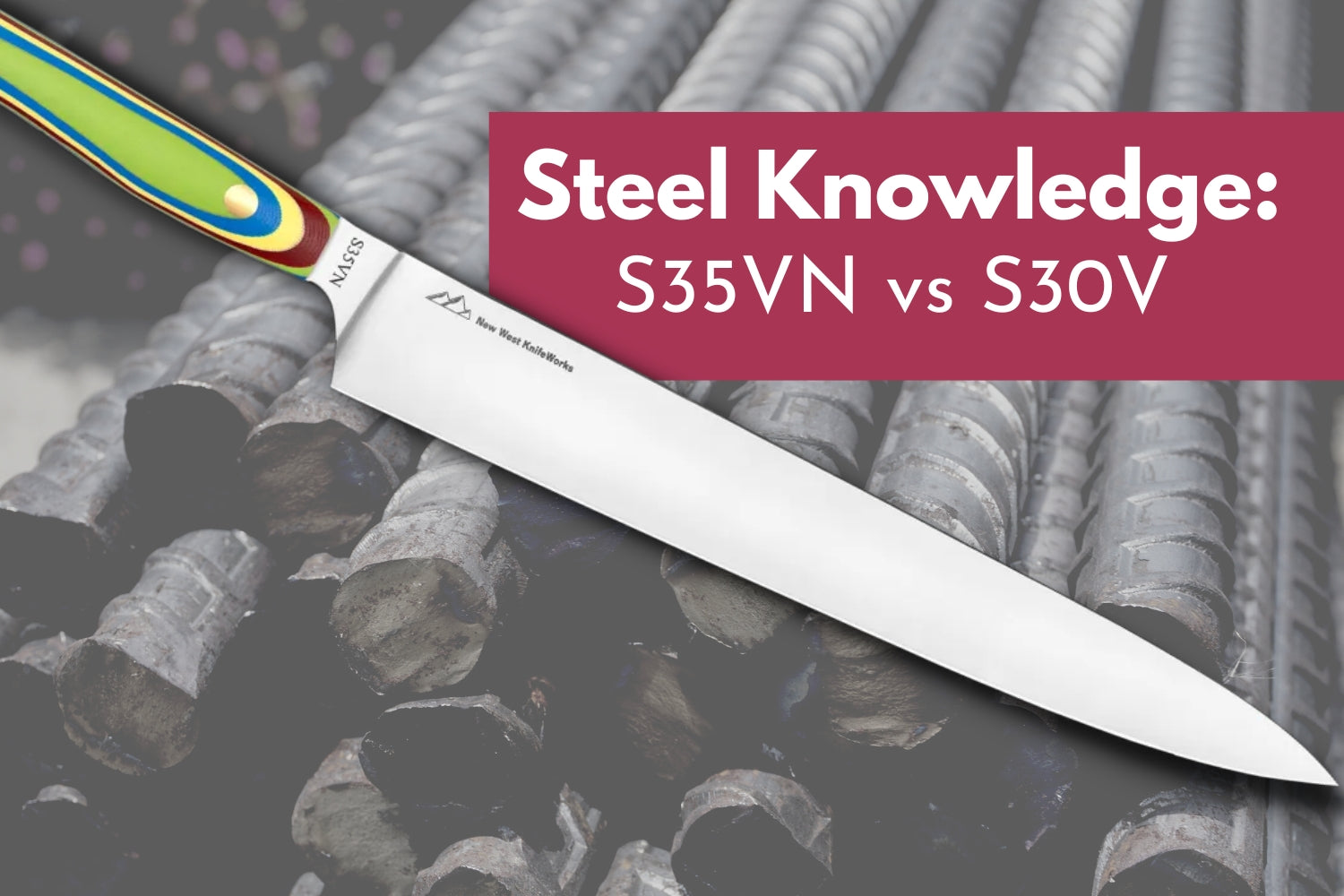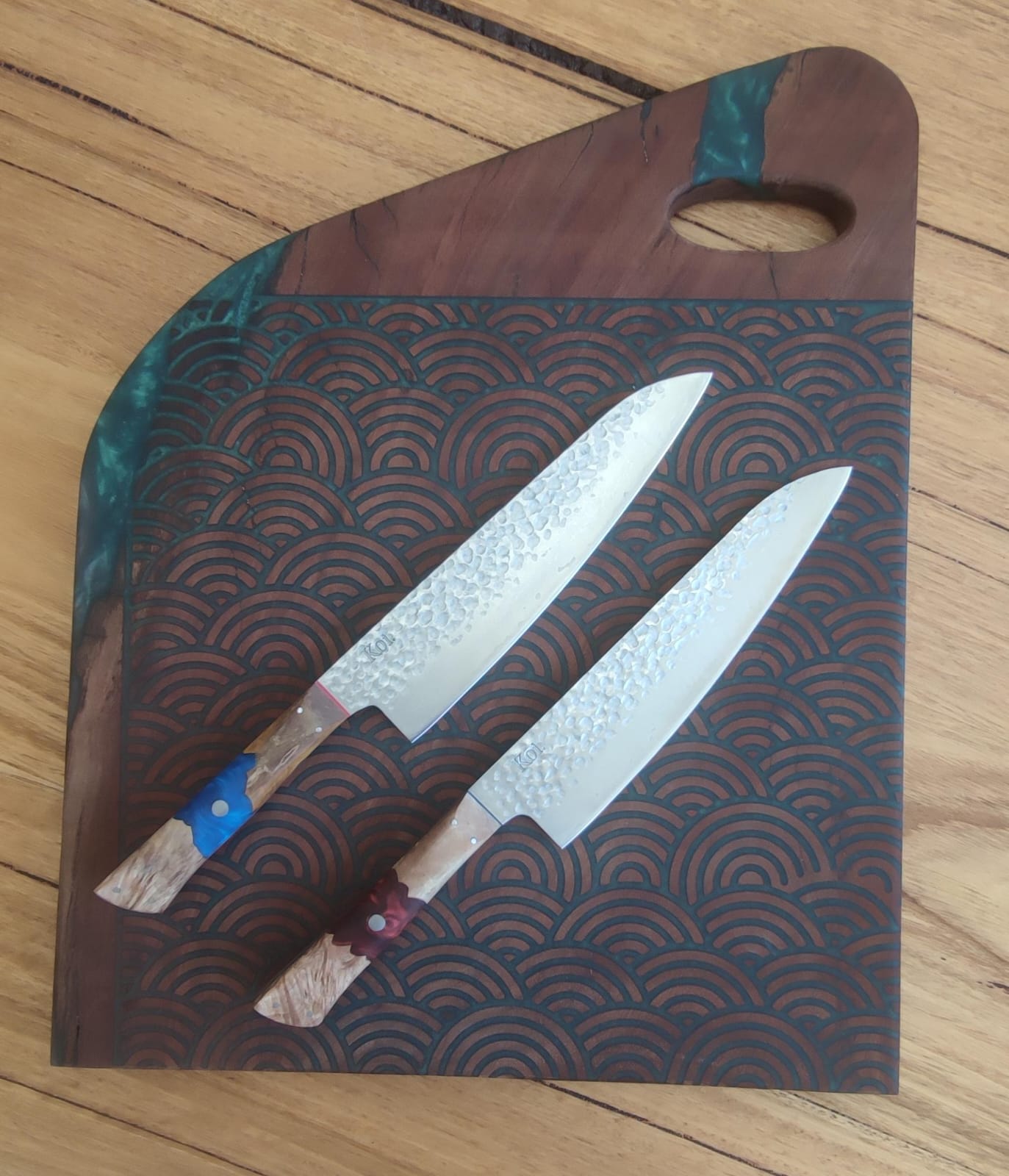In partnership with Crucible Industries, a steel producer based in New York, Chris Reeve developed the S35VN and S30V steels using a specialized technique known as Crucible Particle Metal (CPM) technology. This method ensures that the carbides, the hard particles that keep the blade sharp, are distributed evenly throughout the steel, resulting in a more homogeneous product.
Compared to traditional steel manufacturing methods, CPM technology leads to exceptional stability, durability, ease of sharpening, and a polished finish. This advanced steel-making process is only performed by a select few manufacturers globally.
S30V Steel
S30V steel is widely utilized in various knife designs due to its reputation as a reliable and durable material. Created by Crucible Industries in the early 2000s, it has become a favourite among knife manufacturers and enthusiasts alike.
CPM S30V is a martensitic stainless steel specifically designed to offer toughness, wear resistance, and corrosion resistance. Its unique chemistry has been balanced to promote the formation of vanadium carbides, which are harder and more effective in providing wear resistance than chromium carbides.
This steel substantially improves toughness over other high-hardness steels, such as 440C and D2, and its corrosion resistance is equal to or better than 440C in various environments. The CPM process used to produce this steel results in a very homogeneous and high-quality steel characterized by superior dimensional stability, grind ability, and toughness compared to steels produced by conventional processes.
Composition
|
Carbon |
Chromium |
Vanadium |
Molybdenum |
|
1.45% |
14% |
4.00% |
2.00% |
S35V Steel
CPM S35VN is another martensitic stainless steel designed to offer improved toughness over CPM S30V. This steel is also easier to machine and polish than CPM S30V. Its chemistry has been rebalanced to form some niobium carbides along with vanadium and chromium carbides. By substituting niobium carbides for some of the vanadium carbides, CPM S35VN is around 15-20% tougher than CPM S30V without any loss of wear resistance.
The improved toughness of this steel also gives it better resistance to edge chipping.
Both vanadium and niobium carbides are harder and more effective than chromium carbides in providing wear resistance, meaning that the CPM stainless blade steels offer improved edge retention over conventional high chromium steels, such as 440C and D2.
Composition
|
Carbon |
Chromium |
Vanadium |
Molybdenum |
Niobium |
|
1.40% |
20% |
3.00% |
2.00% |
0.50% |
Toughness
S35VN steel is known for its toughness and has a slight edge over S30V steel. It is approximately 15-20% tougher due to the addition of niobium in its composition. This allows it to withstand more stress without breaking or chipping.
Adding niobium to the steel also enables the formation of niobium carbides alongside chromium and vanadium. These niobium carbides tend to substitute for some of the vanadium carbides, which are known to be hard but brittle. This substitution potentially reduces the brittleness of S30V steel and increases its toughness.
Also, S35VN steel is known for its increased toughness, which improves its resistance to edge chipping. This may lead to better edge retention compared to S30V steel. Furthermore, the higher transverse toughness of CPM S35VN steel makes it an ideal choice for larger blades such as hunting, tactical, and survival knives. This is the reason why you will find S35VN steel in most knives.
Sharpness Retention
S35VN and S30V are renowned for their remarkable ability to maintain a sharp edge for extended periods, even with frequent usage. According to CATRA (Cutlery & Allied Trades Research Association) testing conducted by Crucible Industries, S30V steel has been found to possess the same edge retention as S35VN steel.
However, in practical applications, S30V steel has been observed to exhibit slightly superior edge retention compared to S35VN steel.
This difference can be attributed to the higher Vanadium content in S30V steel, which allows it to form more Vanadium carbides, known for their exceptional wear resistance and edge retention properties. As a result, S30V steel may sustain a sharper edge for a slightly longer duration than S35VN steel.
It's worth noting that edge retention can also be influenced by other factors such as the steel's heat treatment, Rockwell Hardness, and edge grind. The Rockwell hardness of the knife, as produced by the manufacturer, also plays a role in determining the edge retention of S30V and S35VN steel. A higher Rockwell value could result in better edge retention.
In conclusion, both CPM S30V and CPM S35VN steel are known for their exceptional edge retention, making either an excellent choice for knife enthusiasts.
Corrosion Resistance
S30V and S35VN steel are known for their exceptional corrosion resistance, as they are premium stainless steels. Despite having different chemical compositions, they offer the same level of protection against corrosion. This is due to their high chromium content of 14%, which is a key element in resisting corrosion.
Furthermore, both sheets of steel contain 2% molybdenum, further enhancing their corrosion resistance. However, knife enthusiasts must note that tempering these steels at high temperatures may negatively impact their corrosion resistance.
Ease of Sharpening
S35VN steel is simpler to sharpen than S30V steel because it contains niobium carbides instead of some vanadium carbides. Vanadium carbides offer excellent wear resistance but are challenging to sharpen because they are hard to deform and remove from the blade's edge.
Niobium carbides, while providing good wear resistance, are slightly softer and easier to sharpen due to their tendency to deform, making them simpler to remove from the edge during the sharpening process. This balance in S35VN steel of toughness, corrosion resistance, and ease of sharpening is achieved without compromising wear resistance.
Usage and Cost
The main difference between S30V and S35VN steel is their toughness. S35VN steel is considered to be tougher and is, therefore, better suited for larger knives such as hunting, tactical, and survival knives. S30V steel, on the other hand, is more suitable for smaller pocket knives that will be subjected to less heavy use.
In terms of price, both S30V and S35VN steel are widely available, with slight variations depending on the knife design and current market conditions. S30V steel is more common; therefore, you will find more knives in S30V steel than in S35VN steel.
Conclusion
Knives with S30V and S35VN blades have proven popular in the medium and premium-priced knife markets. S35VN offers improved toughness and edge holding over S30V and is also easier to work with and resharpen for both manufacturers and end-users. Despite this, S30V is still commonly used in high-end knives, likely due to its availability at a lower cost in bulk sheets.




